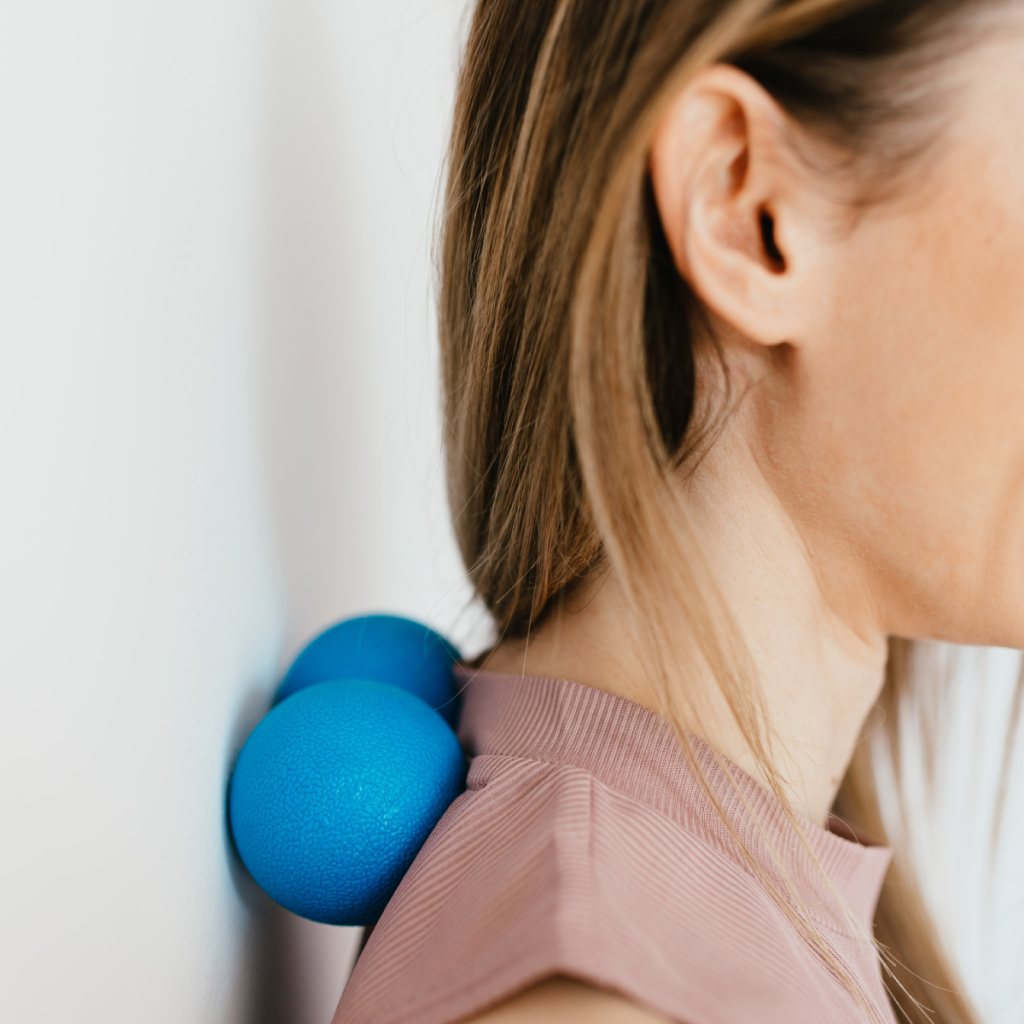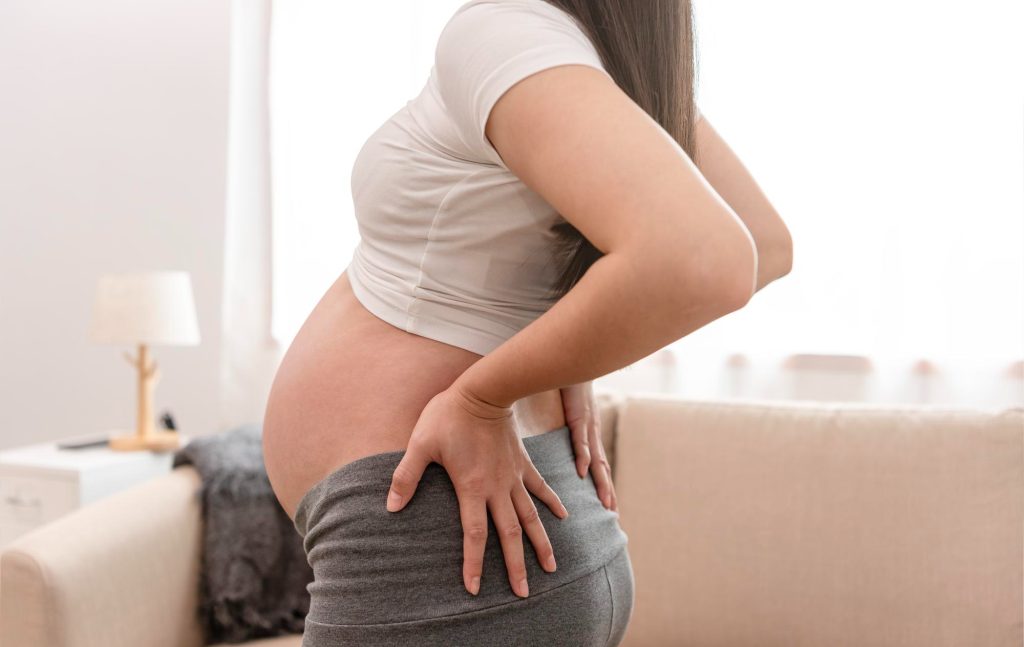Learn how to distinguish between back labor pain and regular pregnancy back pain.
How to Differentiate Between Back Labor Pain and Regular Pregnancy Back Pain
Have you ever wondered if that nagging pain in your back is just a result of your pregnancy, or could it be something more serious like back labor pain? As an expectant mother, it’s important to understand the difference between these two types of pain so you can take the appropriate measures to ensure a healthy pregnancy. In this article, we’ll explore the ins and outs of back labor pain and regular pregnancy back pain, highlighting key differences and when to seek medical attention. So let’s dive in and put your worries to rest!

Understanding Back Labor Pain
Defining Back Labor Pain
First things first, let’s establish what exactly back labor pain is. Unlike regular pregnancy back pain which is caused by the additional weight and strain on your back, back labor pain is specific to the labor process. It typically occurs during active labor when the baby’s head is positioned against the back of the mother’s pelvis.
During the birthing process, the baby moves through the birth canal, guided by the contractions of the uterus. In most cases, the baby’s head is positioned facing downward, with the back of the head facing towards the mother’s front. However, in some instances, the baby’s head may be positioned facing forward instead of backward, resulting in what is known as occiput posterior position.
Causes and Symptoms of Back Labor Pain
The causes of back labor pain can vary, but it’s often associated with the baby’s position during labor. If the baby’s head is facing forward instead of backward, it can put additional pressure on the mother’s spine, resulting in intense back pain. The pressure from the baby’s head can compress the nerves in the mother’s lower back, leading to aching or stabbing sensations.
It’s important to note that not all women experience back labor pain. Factors such as the size and position of the baby, the shape of the mother’s pelvis, and the strength of the contractions can all contribute to the likelihood of experiencing back labor pain.
The symptoms of back labor pain may include aching or stabbing sensations in the lower back that come and go with contractions. The pain may radiate to the hips and buttocks, making it difficult for the mother to find a comfortable position during labor. Some women also report feeling pressure in their rectum or experiencing shooting pains down their legs.
Duration and Intensity of Back Labor Pain
Back labor pain tends to be more intense than regular pregnancy back pain and can last longer as well. While regular pregnancy back pain is often relieved by changing positions or rest, back labor pain may persist regardless of your activity level. The intensity of the pain can vary from woman to woman, with some experiencing mild discomfort and others enduring excruciating pain.
It’s important to remember that back labor pain is a normal part of the labor process for some women. However, if you find yourself experiencing severe and continuous back pain during labor, it may be a sign of back labor pain. In such cases, it’s recommended to consult with your healthcare provider or midwife for guidance and support.
Exploring Regular Pregnancy Back Pain
What is Regular Pregnancy Back Pain?
Now that we have an understanding of back labor pain, let’s shift our focus to regular pregnancy back pain. This type of pain is quite common and is usually a result of the physical changes happening in your body as your baby grows. As your pregnancy progresses, your center of gravity shifts, putting strain on your back muscles.
During pregnancy, your body goes through numerous changes to accommodate the growing baby. These changes include hormonal fluctuations, weight gain, and postural adjustments. All of these factors contribute to the development of regular pregnancy back pain.

Common Triggers of Pregnancy Back Pain
There are several factors that can contribute to regular pregnancy back pain. These include hormonal changes that loosen your ligaments and joints, weight gain which puts additional stress on your back, and poor posture caused by your growing belly. Additionally, activities such as lifting heavy objects or standing for prolonged periods of time can exacerbate the pain.
Hormonal changes play a crucial role in preparing your body for childbirth. During pregnancy, the hormone relaxin is released, which helps to loosen the ligaments and joints in your pelvis. While this is necessary for the baby to pass through the birth canal, it can also affect other areas of your body, including your back. The loosening of ligaments can lead to instability and discomfort in the lower back.
Weight gain is a natural part of pregnancy as your baby grows and develops. However, the additional weight can put strain on your back muscles, leading to pain and discomfort. As your belly expands, your center of gravity shifts forward, causing your back muscles to work harder to maintain balance. This increased workload can result in back pain.
Poor posture is another common trigger of pregnancy back pain. As your belly grows, your body naturally adjusts its posture to accommodate the extra weight. This can lead to a forward tilt of the pelvis and an exaggerated curve in the lower back, known as lordosis. This altered posture puts additional stress on the muscles and ligaments of the lower back, leading to pain and discomfort.
Engaging in activities that require heavy lifting or standing for long periods of time can also contribute to pregnancy back pain. Lifting heavy objects puts strain on your back muscles, while prolonged standing can lead to muscle fatigue and increased pressure on the spine. It is important to be mindful of these activities and take breaks or seek assistance when needed.
How Pregnancy Back Pain Feels
Regular pregnancy back pain is often described as a dull ache or a feeling of heaviness in the lower back. It may come and go throughout the day, depending on your activity level. Resting, modifying your posture, or engaging in gentle exercises specifically designed for pregnancy can help alleviate the discomfort.
The pain experienced during pregnancy back pain can vary from person to person. Some may describe it as a constant ache, while others may feel intermittent sharp pains. The intensity of the pain can also vary, ranging from mild discomfort to severe pain that affects daily activities.
It is important to listen to your body and take steps to manage and alleviate pregnancy back pain. Resting and avoiding activities that exacerbate the pain can provide relief. Modifying your posture by using pillows or cushions for support can help maintain a neutral spine position and reduce strain on the back. Engaging in gentle exercises, such as prenatal yoga or swimming, can also help strengthen the muscles that support the back and alleviate discomfort.
If the pain becomes severe or is accompanied by other symptoms, such as fever or numbness, it is important to consult with your healthcare provider. They can provide guidance and recommend appropriate treatment options to ensure a healthy and comfortable pregnancy.
Key Differences Between Back Labor Pain and Regular Pregnancy Back Pain
Comparing the Onset and Duration
One of the key differences between back labor pain and regular pregnancy back pain lies in their onset and duration. Back labor pain typically occurs during active labor, while regular pregnancy back pain can begin at any point during your pregnancy and continue until delivery.
During active labor, the cervix dilates and contractions become more frequent and intense. This is when back labor pain is most likely to occur. It can start as a dull ache in the lower back and gradually intensify as labor progresses. In contrast, regular pregnancy back pain can start as early as the first trimester and persist throughout the entire pregnancy. It may come and go, varying in intensity depending on factors such as posture, activity level, and hormonal changes.
Analyzing the Pain Location and Intensity
Another important distinction between the two types of pain is their location and intensity. Back labor pain is concentrated in the lower back and can be incredibly intense, often described as sharp or stabbing. This type of pain is caused by the pressure of the baby’s head against the spine and the stretching of the muscles and ligaments in the back.
Regular pregnancy back pain, on the other hand, is more diffuse, radiating across the lower back. It is often described as a dull ache or a constant discomfort. This type of pain is mainly caused by the extra weight and shifting of the body’s center of gravity during pregnancy. Hormonal changes, such as the softening of ligaments and joints, can also contribute to the development of back pain.
Differentiating the Accompanying Symptoms
In addition to the differences in pain location and intensity, it’s also worth noting the accompanying symptoms. Back labor pain is typically accompanied by regular contractions, which can feel like intense tightening in the abdomen. These contractions help to push the baby down the birth canal and are a sign that labor is progressing.
Regular pregnancy back pain, on the other hand, is not associated with contractions and may occur independently. It is often accompanied by other common pregnancy symptoms such as pelvic pressure, hip pain, and discomfort while walking or standing for long periods. These symptoms are generally more manageable and can be relieved with proper rest, exercise, and stretching.
It’s important to remember that every pregnancy and labor experience is unique, and the presence of back pain does not necessarily indicate back labor. If you are unsure about the type of pain you are experiencing or have concerns about your pregnancy, it is always best to consult with your healthcare provider for a proper evaluation and guidance.
When to Seek Medical Attention
Warning Signs in Back Labor Pain
While back labor pain is a normal part of the labor process, there are certain warning signs that indicate a need for medical attention. If you experience severe and continuous back pain accompanied by frequent contractions, leakage of fluid, or any other concerning symptoms, it’s important to consult with your healthcare provider immediately.
Concerning Symptoms in Regular Pregnancy Back Pain
Although regular pregnancy back pain is typically less severe, there are still instances where you should seek medical attention. If you notice any sudden or severe increase in pain, pain accompanied by other symptoms such as fever or vaginal bleeding, or if you have any concerns about your pregnancy, don’t hesitate to reach out to your healthcare provider.
Now that you have a better understanding of the differences between back labor pain and regular pregnancy back pain, you can confidently navigate through your pregnancy journey. Remember, every pregnancy is unique, so it’s important to listen to your body and seek medical advice if needed. Embrace the changes, take care of yourself, and soon you’ll be holding your precious bundle of joy in your arms!



